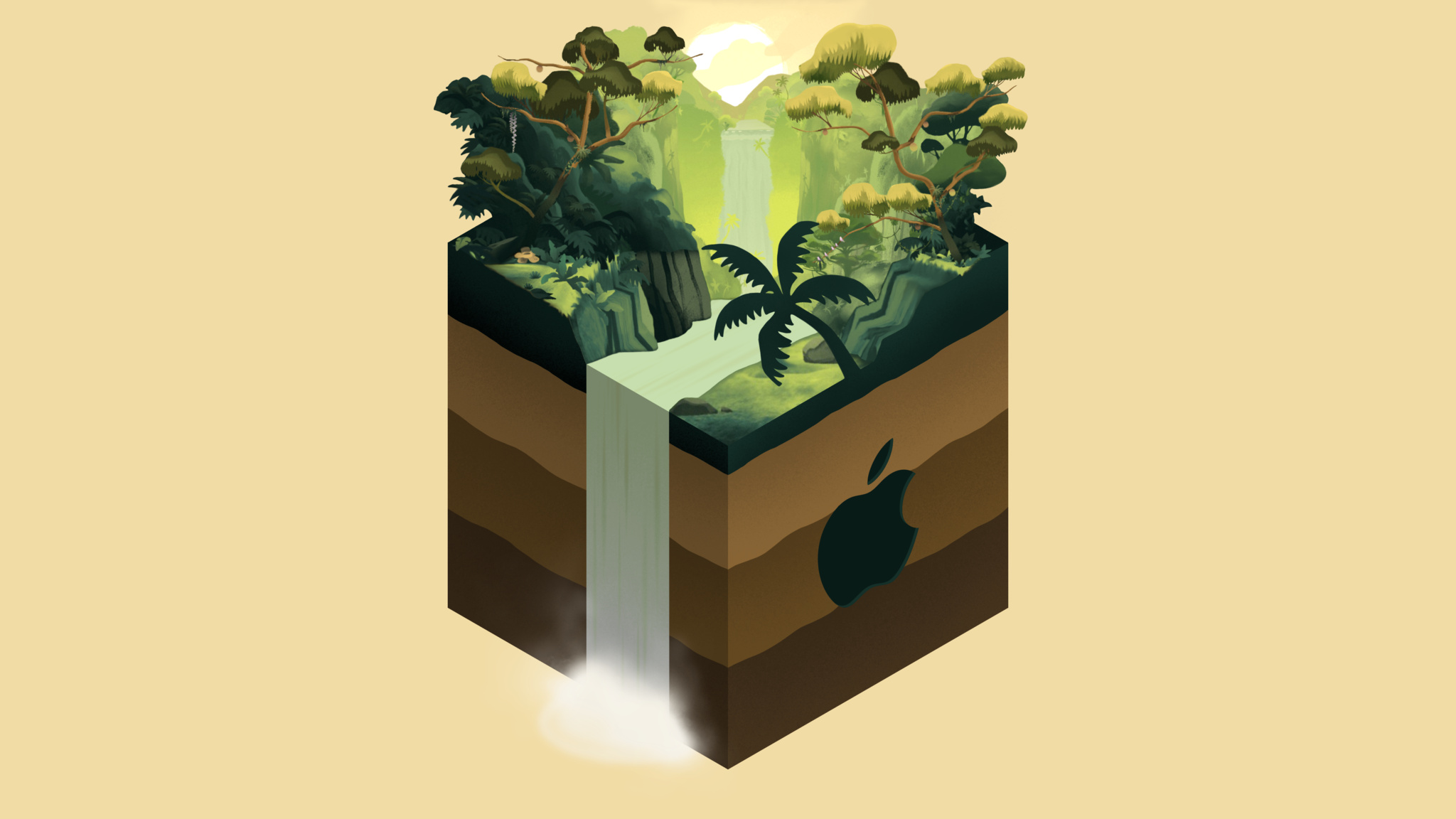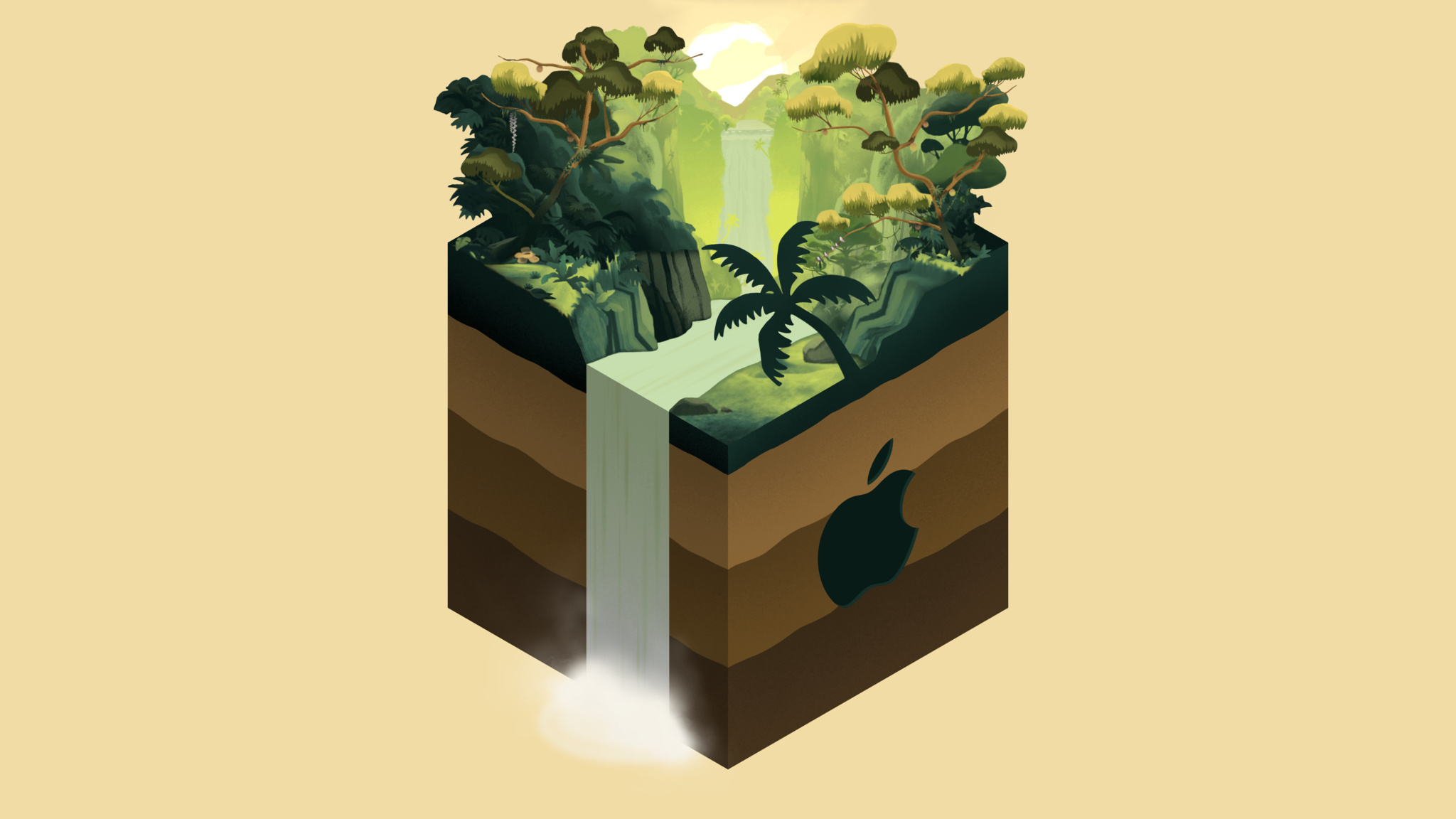[ad_1]

Why design video games? For Apple Design Award winner Felix Bohatsch, it’s about greater than creating pleasant diversions or telling an ideal story.
“[They’re] a form of asynchronous communication,” says the Vienna-based designer. “I can share matters and ideas with individuals everywhere in the world. I discover that very rewarding — if it seems effectively!” he provides with amusing.
Gibbon: Past the Timber turned out fairly effectively. Developed by Damaged Guidelines, of which Bohatsch is a co-founder, Gibbon casts you as an ape who flings, swings, and slides their means by means of a fantastically realized panorama. The flinging-around-trees mechanic is exclusive, however straightforward to be taught — even for earthbound people.

Welcome to the jungle: *Gibbon* begins in a gorgeously drawn forest.
“The aim was to create a circulation state with the gameplay, the place gamers get into the swinging and leaping with out considering an excessive amount of about it,” says Bohatsch, who conceived the sport with Clemens Scott, Damaged Guidelines’s inventive director and lead artist. “What we hope is that the system kind of vanishes, and all you’ve is the gamers, world and characters.”
Nonetheless, there’s extra to Gibbon than free-flying enjoyable. “We shortly realized we couldn’t simply construct this purely escapist infinite runner, the place all the pieces’s lush and delightful and glad,” Bohatsch says. “Gibbons are endangered. They’re shedding their habitats and their forests are being destroyed. And that led to my second motivation: To indicate the world the difficulties gibbons face. To not be preachy — however to point out the way it may really feel to lose your loved ones, or to stay in a world the place there’s possibly not a lot place for you.”

The sport’s bustling cityscapes are a commentary on how gibbons are shedding their habitats, says Bohatsch.
The digital draw
For a short time, Bohatsch felt that there won’t be a spot for him in design. He utilized to school with the hopes of learning graphic design however wasn’t accepted to this system he was aiming for. “I assumed, effectively, I’ll be taught extra about computer systems, since that’s what designers use,” he says.
He spent the subsequent few years studying the instruments of the commerce and the science behind it. Although he definitely performed his share of video games, he by no means thought-about himself a hardcore gamer. What he did really feel was the draw of video games — the way in which they might unify graphic design, interactive design, and laptop science.
When a chance to check sport design materialized, he jumped on the probability. “I’d by no means seen myself as a sport designer, however that second was the place I spotted I may mix my passions and put them to good use.”
I needed to evoke emotions that is likely to be linked to the pure world [without] re-creating it.
Appropriately sufficient, the thought for Gibbon got here from a household journey to the zoo, the place Bohatsch discovered himself noticing the animals’ outstanding agility and virtually otherworldly actions.
The Damaged Guidelines group explored variations on that concept over a number of years as they labored on different initiatives, looking for the suitable translation of that movement to a display screen. “We didn’t need a simulation sport; we needed a way of abstraction,” Bohatsch says. “I needed to evoke emotions that is likely to be linked to the pure world [without] re-creating it.”
To breathe life into the sport’s wealthy hand-drawn look — the luxurious forests filled with spreading branches, inviting vines, and mighty tree trunks — the group turned to London-based artist and designer Catherine Unger, a sport veteran who’d labored on such titles as Tangle Tower.
“The aim was for the visuals to appear to be an illustration,” says Unger. That meant including hand-painted 3D textures, tough edges, and even a bit of wobble within the sport’s linework to seize that storybook feeling.
The group initially used 2D belongings to create a parallaxing surroundings with the sport, then experimented with turning the canopies themselves into 3D splines. “It appeared wonderful!” says Unger. “That snowballed right into a dialogue that led to [more] 3D foreground components that gave the sport a complete new degree of depth.”
There was a whole lot of debate…
When it got here time to duplicate the animals’ actions within the sport, the Damaged Guidelines group, effectively, broke the principles.
“Gibbon has a form of inverted management scheme.” Bohatsch says. “You maintain when the gibbon has to carry, and launch when the gibbon has to leap. Principally, every time the gibbon collides or interacts with a tree or a vine, that’s while you contact the system.”

Early sketches present how the Damaged Guidelines group reached for a “poetic connection” between participant and character.
To refine the mechanic, Damaged Guidelines introduced on Canadian developer Eddy Boxerman to sharpen the sport’s most important physics and motion. “We by no means needed it to be about pixel-perfect timing, however we did need some form of problem that gave you company over your actions.” The group tried out alternate outcomes for not lifting your finger on the proper time, together with one which levied a penalty and one other that… did just about nothing. “The gibbon would simply leap away on his personal. It was simpler for some gamers,” laughs Bohatsch, “nevertheless it was getting fairly boring.”
Gibbon‘s jump-to-release mechanic subverts the standard press-to-jump motion of most video games, however the Damaged Guidelines group stands by it. “There was a whole lot of debate about whether or not this was a good suggestion,” he says, “however I feel it creates a form of poetic connection between you and the character.”
The mechanic created a problem for Unger too. “It was notably tough to create the artwork fashion for the bushes; the gameplay meant that the bushes appeared a bit alien and strange,” she says. It was sport co-creator Scott who solved that problem, suggesting that Unger and group restrict tree canopies to the background branches and preserve the primary gameplay branches free for gibbon swinging.
The video games we need to construct aren’t essentially about being real looking, however about creating feelings.
The poetic connection Bohatsch mentions is the keystone of the sport — and it’s been Damaged Guidelines’s specialty because the studio’s 2009 inception. The Damaged Guidelines catalog consists of such well-regarded titles as And But It Strikes and Secrets and techniques of Raetikon, in addition to two extra Apple Design Award winners: Eloh, a rhythmic puzzle sport, and Previous Man’s Journey, whose most important character follows his personal arc of loss, remorse, and reconciliation.
“It is actually about emotion, proper?” he says. “The video games we need to construct aren’t essentially about being real looking, however about creating feelings. After I was youthful I performed a sport known as Echo, and there was a second while you held a button to seize palms with a secondary character. It felt so nice. All you probably did was press a button. However the characters and their reactions have been so pure and evocative. That confirmed me how video games can create a complete vary of various feelings.”

In the long run, *Gibbon* is a couple of seek for household.
Emotion isn’t the one factor at play in Gibbon — the group has a cautious eye on embodiment, too. “Gamers are inclined to have a bias towards the characters we play,” says Bohatsch. “In Previous Man’s Journey, we heard from gamers about how, as they performed, the developed extra empathy for the outdated man.” It’s the identical with Gibbon — placing your self within the palms of one other creature creates that connection from the primary leap.
This immersion carries by means of within the sport’s environments. When play begins, you’re in a lush forest: swinging amongst spreading branches, inviting vines, and mighty tree trunks. As the sport continues, nevertheless, these forests start to skinny out. The primal inexperienced backdrop so acquainted to these early moments is changed by harsh, chugging development autos and the dissonant rumble of artificial equipment.
“I needed the deforestation scenes to really feel starkly completely different from the jungle scenes, not only for visible selection but additionally for emotional impression,” says Unger. “The extra real looking desaturated tones within the deforested areas mirror the empty emotions of the gibbons within the sport. However they’re additionally a true-to-life illustration of a jungle devastated by human impression.”

The sport’s deforestation scenes have a darkish, unsettling really feel — particularly when contrasted with the pure great thing about earlier ranges.
In the long run, Gibbon takes its place amongst Damaged Guidelines’s titles as a sport that’s one thing extra. “I would like individuals to consider gibbons and about how a lot area we are able to nonetheless give them,” he says. “We need to linger in individuals’s minds after they’ve performed.”
And he desires to proceed creating video games that talk to one thing greater, one thing extra common, one thing that may’t be created in a vacuum — or, typically, even a studio.
“If I had any recommendation for aspiring designer, it could be to exit on the earth and stay a life outdoors of video games,” he says. “Journey, discuss to numerous individuals, learn books, go to live shows. Play video games, positive, however don’t spend all of your time with them. There’s a lot inspiration on the earth, whether or not it’s coming from nature or different human beings or different species. That’s what we’re making an attempt to design: new methods to have a look at the world by means of the gaming lens.”
[ad_2]
Source_link
